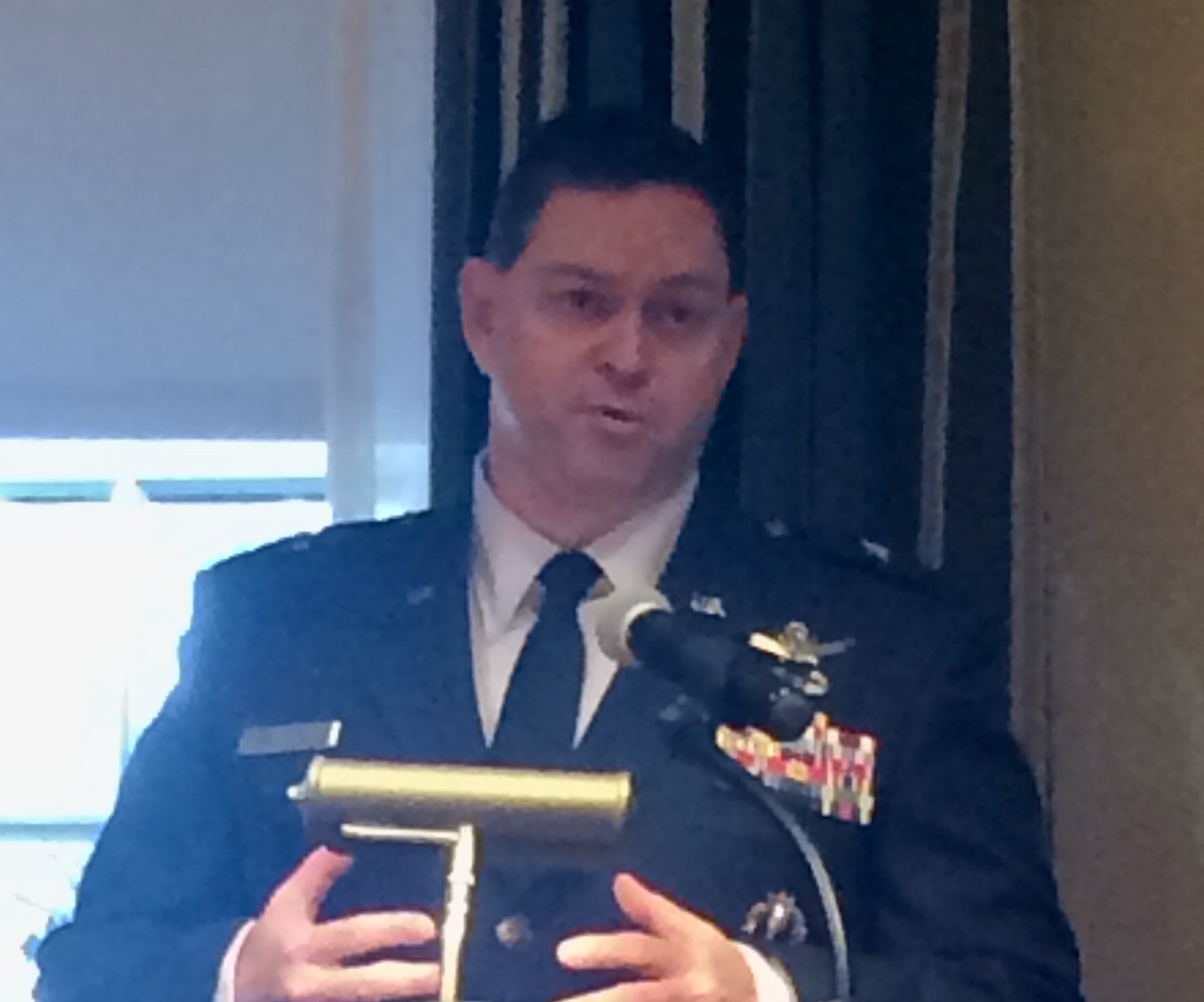
Brig. Gen. Chance Saltzman, who heads the Chief of Staff's multi-domain command and control initiative, speaks at an AFA Mitchell Institute event on Capitol Hill on Friday. Staff photo by Amy McCullough.
The team in charge of Chief of Staff Gen. David Goldfein’s multi-domain command and control initiative will brief the service’s four-star generals on Nov. 27.
Brig. Gen. Chance Saltzman, USAF’s director of current operations and leader of the MDC2 initiative, said the briefing will be focused on three main lines of effort.
The first is the need for a trained cadre of multi-domain and command control experts. Under the current system, the Air Force pulls airmen from their operational career fields to work in an air operations center for anywhere from one to three years. “A lot of time they see that time away from their main career field as a problem, so …. they want to be there as short a time as possible,” said Saltzman at an AFA Mitchell Institute event in Washington, D.C., on Friday. “There really is no knowledge built into that, really no long-term sustainment effort, because it’s like driving a rental car. You don’t take it through the car wash. You drop in, you get what you need, and you go back.”
That’s why within the next year, the Air Force is looking to stand up a “mid-career cross-flow opportunity” for officers who have already served 10 to 12 years in other career fields, such as space, cyber, intel, and rated operations. An Air Force selection board will pick a “certain number of officers” to move over to the new 13O, or 13 Oscar, career field, where they will theoretically stay for another eight to 10 years before retiring, giving the Air Force the opportunity to build the operational-level command and control expertise it needs.
The second line of effort is enabling technology. Saltzman said the Air Force knows there is a host of commercially available, state-of-the-art technology that will enable the service to make faster decisions, provide better situational awareness and “assured direction of forces.” But, the Air Force just isn’t organized to take advantage of it right now.
This comes down to the difference between “old new” and “new new.” Saltzman said Goldfein has expressed his frustration with the “old new” method of doing things, which basically means incrementally updating technology the service is already using. “New new,” said Saltzman, is a completely new way of doing things and it comes with more unknowns, and therefore more risk, requiring a significant cultural shift in the Air Force.
To address this, the Air Force is building a “shadow operations center,” which will focus on rapidly building, prototyping, testing, and fielding software capability. The Air Force plans to build a “node” at Nellis and is currently in the design phase for that effort. Saltzman said his goal is to begin conducting experiments “by late next summer.”
The third line of effort looks at command and control concepts. “How do you build a multi-domain force package? We’ve been building tremendous air packages for years to create effect, but as you start saying you’re going to create offensive and defensive effects from space and cyber as well, who’s the package commander? How does this come together? Is this one AOC or is this three different op centers that are integrating and it comes together at the point of application?” asked Saltzman. “I don’t have the answer. I just know we need to investigate, experiment, and explore with those concepts to get it right.”
The Air Force has already approved a series of MDC2 wargames, the first of which will take place in the fall of 2018. Unlike existing command and control exercises, these wargames will focus on future concepts, and it won’t be pulling airmen from the various air operations centers. Instead, Saltzman said the service plans to utilize students at Air Command and Staff College and the Air War College, “who are still trained professionals, but aren’t tied down to their day-to-day jobs,” enabling them “to think more broadly.” The annual event will likely be a tabletop exercise until the service can build modeling and simulation that is equipped to handle the multi-domain threats that will be tested.
“Those are the three initial activities over the next year we’re going to put in place to really get the momentum moving over this campaign,” said Saltzman.